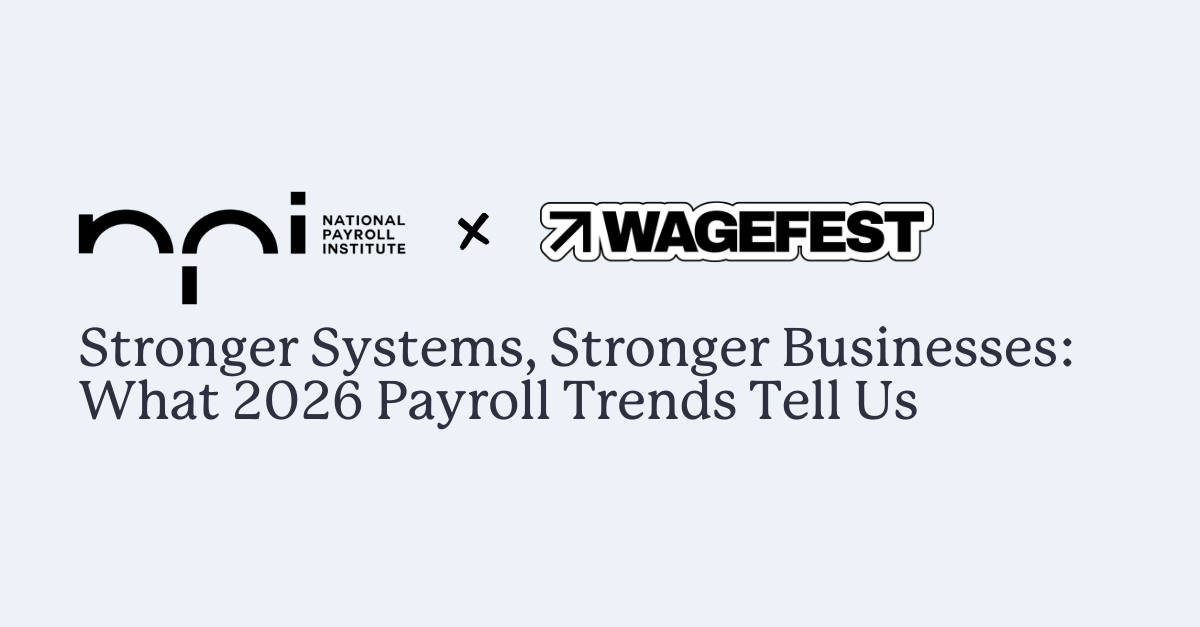Become an insider!
Get our latest payroll and small business articles sent straight to your inbox.
Payroll management is the set of processes a business undertakes to handle employee compensation. Processing payroll involves tracking and calculating employee hours, deducting taxes, and issuing payments. With effective processes, you can ensure everybody is paid correctly and on time while complying with financial regulations.
In Canada, payroll is a tricky territory where human resources professionals must stay in line with federal laws, provincial regulations, and unique remittance obligations. If payroll administrators aren’t familiar with the Canada Revenue Agency (CRA) guidelines and employment standards, they could run into serious complications.
This guide will give you a grip on the key concepts of payroll management in Canada and show you how automated payroll software can benefit your business.
Key concepts in Canadian payroll.
The payroll rules and regulations in Canada have some unique differences from those of our neighbors in the south.
A key aspect of employment law In Canada is that there are two main categories: federally regulated and provincially regulated employers:
- Federally regulated employers are governed by the Canada Labour Code and operate in industries such as banking, aerospace, telecommunications, and transportation.
- Provincially regulated employers are under the jurisdiction of individual provinces or territories. These regulations vary from one province to another, and cover a wide range of industries outside the federal scope.
Payment processing in Canada includes complex calculations with many variables to consider. There are incomes, benefits and deductions that have different taxable, insurable or pensionable impacts on employee pay. Examples include how a benefit is received or enjoyed by an employee and even how it is paid to them.
At every step, it’s critical that your processes for remuneration and tax payments comply with federal and provincial regulations.
Here are some things your payroll department needs to know:
- Labour Standard regulations: Employers are bound by federal regulations as well as their respective provincial labour standards, which have a direct impact on an employee’s payroll calculation. For example, the minimum
- Employer taxes: You must pay contributions to workers’ compensation, employer health taxes (EHT), and the Health Services Fund (in Quebec). There are some exemptions — for example, you don’t have to pay any EHT in Ontario if your annual payroll does not exceed $1 million.
- Payroll taxes: Also referred to as statutory deductions, payroll taxes encompass contributions and premiums such as for the Canadian Pension Plan (CPP) or Québec Pension Plan (QPP) and Employment Insurance (EI). Each includes a contribution or premium for the employer as well as for the employee side. These taxes are calculated differently and serve different purposes, so it’s best to review the rules for each with either the Canada Revenue Agency or Revenu Québec.
- Remittances: When an employer submits payroll taxes to the Canada Revenue Agency or Revenu Québec, this is referred to as remittance. This includes filing and paying withholding amounts, premiums, and contributions. There are different remittance schedules, due dates, and ways to remit funds.
- Payment processing: Every employee wants to be paid on time, right? If you can’t keep up with employee pay expectations, you’ll struggle to keep your staff! When you set up direct deposit in Canada, you can ensure timely and secure payment without any need for cheques or cash.
- Pay stubs: You must give employees a detailed record of their earnings and deductions for each pay period. Information on pay stubs includes — but isn’t limited to — the employee’s first and last name, their position, benefits and allowances, deductions, gross pay, net pay, taxes, CPP, EI contributions, payment date, and the work period the payment corresponds to.
- Payroll cycle: Many Canadian employers run payroll biweekly, which would mean 26 pay cheques. Other options are semi-monthly and monthly pay runs.
- Minimum wage: When paying employees, all Canadian employers should refer to the provincial minimum wage requirements. Federally regulated employees must be paid according to different regulations, so it’s important to follow the laws of your province or territory.
- Paid breaks: The regulations for paid time off (PTO) and vacation leave vary by province. Employers may grant PTO on one of three systems — fixed, accrued, or unlimited. Also, some provinces now have mandated sick PTO. As for paid vacation, the statutory minimum is two weeks in most provinces but Quebec and Saskatchewan have different rules.
- Parental leave: Employees may be eligible for maternity and parental leave if they are pregnant or caring for a newborn or newly adopted child. Employees can choose between standard or extended benefits. You can find out more on our post about Handling Maternity and Parental Leave in Canada.
Payroll software vs. managed payroll.
The main difference between payroll software and a fully managed payroll service comes down to who is responsible for payment processing. Managed payroll services involve outsourcing payroll tasks to a third-party provider, while payroll software enables businesses to manage all their payroll processes in-house.
Consider these differences between payroll software and managed payroll providers below:
| Feature | Payroll Software | Managed Payroll |
| Control | You have full control. | You give control to a third-party provider. |
| Cost | You can get key functions and features for as little as $20/mo. | Many managed payroll services require you to contact sales to get a quote. (These quotes are typically much higher than payroll software.) |
| Expertise Required | You need some knowledge to use the software, but the best platforms include user-friendly resources and expert customer support. | You don’t need any, as the provider handles it all. |
| Flexibility | It’s very flexible. You can make changes to your plan anytime. | It’s less flexible. Changes depend on your agreement with the provider, and you could incur charges for cancellation. |
| Time Investment | You spend some time managing the software, but it is much faster than manually managing payroll on spreadsheets. Also, most platforms include time-saving automations. | You spend very little time. The service does it for you. |
Believe it or not, 34% of business owners still manage their payroll manually using spreadsheets!
There’s no denying that having your payroll managed by a third-party provider frees up internal resources. You can lighten the load on your team and get more time to focus on other tasks. On the flip side, you have less control over your data and processes, posing some risks to compliance and data security.
So, is payroll management software the better choice?
Let’s take a closer look.
10 benefits of payroll software for Canadian payroll management.
Payroll software helps you manage your payroll quickly without giving up any control over your business or employee data. Here are ten reasons small businesses in Canada should use software for payment processing:
Payroll management.
Any documents or records relating to payroll must be kept at your place of business or your home address in Canada unless you have written permission from the CRA to keep them elsewhere. Unfortunately, many small business owners are flying by the seat of their pants — which means they could face penalties for simple mistakes.
With payroll software at the heart of your payroll management processes, HR staff can get more time to do things correctly. From paperwork and calculations to taxes and regulations, you can feel confident that everything is in check with Canadian payroll practices.
Payroll processing.
According to PwC, payroll leakage costs large Canadian organizations between $1.2 billion to $5 billion each year. Quite often, miscalculations and financial mishaps are the result of human error.
When you let financial technology run the numbers, you can efficiently manage payroll tasks and calculations without losing money (or your mind). Payroll software does the math for you, so you pay everyone correctly and on time — every time.
Related: The Consequences of Payroll Errors Fully Explained →
Compliance with Canadian regulations.
Canadian payroll tax regulations can be confusing — an honest misstep can lead to a costly fine for non-compliance.
The Personal Information Protection and Electronic Documents Act (PIPEDA) governs the collection, use, and disclosure of personal data in Canada. When you use payroll software developed for the Canadian market, you can rest assured it is designed to keep up with the latest tax laws and financial regulation changes.
Remittance management.
Payroll remittances in Canada can leave many administrators scratching their heads — or pulling out their hair! As part of company tax obligations, payroll teams must make the correct contributions to the CRA. If you aren’t doing this correctly, it could leave employees without crucial benefits, insurance, and pension funds when they need it most.
Thankfully, managing remittances is easier with payroll software. You can easily track earnings, make the correct deductions, and send payments to the right places.
Automated tax calculations.
Calculating taxes can be a long and complicated process — especially if you try to manage everything manually. Payroll software automatically handles federal and provincial income tax calculations. This saves time, letting admin staff focus on specific taxable benefits that their employees might have, like a car or company cell phone.
This automation is especially helpful in Canada, where tax rates and rules vary from one province to the next. You won’t have to worry about getting a knock on the door from CRA auditors or angry employees because you messed up on payroll remittances.
| Wagepoint handles federal and provincial tax calculations, simplifying all your tax obligations in a fraction of the time. Even year-end filing becomes a breeze! Ready for payroll management without the misery? Check Wagepoint’s pricing. |
Small business support.
For small businesses in Canada, it can be a real challenge to track employee hours, taxes, benefits, deductions, and other contributions. Without a dedicated HR department, business owners can waste countless hours managing financial tasks themselves.
Payroll automation gives business owners some breathing room. When your payroll processing runs smoothly, you can keep your employees happy. Moreover, you’ll have more time and energy to focus on growing your business without any worries about burning out or breaking the bank.
Educational resources.
You might afford a bookkeeper or accountant to take charge of your books when you grow. Until then, small businesses will have to navigate the perils of payroll management in Canada themselves.
Luckily, the internet has excellent learning resources about payroll management, including webinars, FAQs, and guides. Small business owners in Canada can quickly get up to speed with best practices and ensure they stay compliant with Canadian regulations.
Wagepoint helps you manage payroll confidently through the resources in our Knowledge Base and Wagepoint Academy.
Bank account integration.
Missing or incorrect info in banking transfers can cause delays. In many cases, you will have to wait weeks for the return of funds. That could be a real problem if you’ve got an employee waiting on her pay for a vacation or house repair.
The best payroll software can link directly to your bank account, making it quick and easy to send transfers to anyone via direct deposit. Canadian businesses can use this integration to simplify the payment process, guaranteeing safe, speedy transfers for all employee payments and payroll tax remittances.
Employee self-service.
When managing payroll in Canada, you must file a T4 slip for each employee and distribute T4 slips to your employees every year. This document summarizes all the remuneration paid by an employer to an employee during the calendar year.
Leading payroll software includes employee self-service portals that let employees view their pay stubs and tax forms online. Some portals, like Wagepoint, let employees update their details or self-board with personal, banking, and tax information.
With this setup, administrative staff have less on their plate as they give employees easy access to their payroll information anytime they need it. This approach also builds trust by keeping everything related to employee pay transparent.
Management reporting.
Comprehensive financial analysis is hard to do with a pen and paper. Unless you’re Rain Man, the manual approach makes it almost impossible to identify trends and extract tangible insights that will impact your company’s financial performance.
When you bring payroll software into the mix, you’ll have real-time reporting and analytics features to explore payroll data at a deeper level. These features make it easy to track employee time and attendance, understand labour costs, and identify trends.
With these reports, Canadian small business owners can make smarter decisions about their budgets, hiring, and expenses.
Enhanced payroll experience.
Payroll management is one of the most time-consuming tasks for small business owners. The more you grow, the more of a headache it becomes — especially if you’re trying to keep track by using spreadsheets.
Payroll software brings all your money matters together in a user-friendly dashboard, leaving no blind spots. You can take care of employee pay the right way without wasting time or stressing about anything slipping through the cracks. Another perk of payroll software is that you’ll have expert customer support if you need a hand.
Related: How Much Does Payroll Software Cost? →
More resources for Canadian businesses.
Keen to find out more about Canadian Payroll Management? Here are some great resources to build your knowledge and confidence:
- The official website of the Government of Canada has a lot of free information on payroll management. It covers all the fundamentals of payroll and tax management, from opening accounts to remittances to calculating deductions and contributions.
- The National Payroll Institute (NPI) is a payroll practitioners organization in Canada that collaborates with over 40,000 payroll professionals. Formerly known as the Canadian Payroll Association, the NPI aims to improve payroll management and simplify compliance with Canada’s laws and regulations. NPI members can access a deep knowledge base, including online learning resources, webinars, seminars, training courses, and a hotline to discuss payroll issues.
- Webinars are a great way to quickly wrap your head around payroll basics. Here are a few free video resources worth checking out:
Final thoughts on Canadian payroll management.
From handling sensitive employee information to calculating taxes to following provincial and federal laws, payroll management in Canada is not easy. If you can’t run payroll successfully, you may be unable to pay employees on time, or you could run into legal troubles.
With payroll software, you can lift the burden on your HR department and eliminate a whole lot of guesswork, risks, and compliance worries. Best of all, you stay in control of everything without worrying about data security or dealing with third-party providers.
Wagepoint saves you time and hassle.
Payroll processing in Canada is tricky. Wagepoint makes it easy by handling your calculations and keeping you compliant. You can also access detailed reports about your payroll data, helping you stay on top of your finances and make informed decisions about your business.
Are you ready to make payroll easy-peasy? Try Wagepoint free for 14 days.
____________
FAQs on Canadian payroll management.
What is the role of payroll administration in a company?
Payroll administration involves managing all aspects of employee compensation, taxes, and records. The HR department takes charge of these tasks, making sure companies keep up with accurate and timely payments, comply with regulations, and securely handle sensitive employee data.
What payroll solutions are available for small businesses?
Small businesses can benefit from payroll software designed for their needs, offering simplicity, cost-effectiveness, and scalability. These solutions often include automated tax calculations and integration with accounting systems.
How do self-service payroll portals benefit employees?
Self-service portals allow employees to view and download their pay stubs, tax forms, and other payroll information anytime, enhancing transparency and convenience while reducing HR’s administrative workload.
Why are project management skills important for payroll professionals?
Project management skills help payroll professionals efficiently implement new systems, manage payroll processing timelines, and coordinate with other departments, ensuring smooth and compliant payroll operations.
How are payroll and HR functions connected within an organization?
Payroll and HR functions are closely linked, sharing employee data for compensation, benefits administration, leave tracking, and ensuring compliance with labour laws and regulations.
What role does workers’ compensation play in payroll deductions?
Workers’ compensation insurance is a mandatory payroll deduction in many jurisdictions, providing benefits to employees who get injured at work. It ensures compliance and protection for both employers and employees.
Can you explain the process of filing year-end tax reports for employees?
Filing year-end tax reports involves summarizing an employee’s annual earnings and deductions and providing this information to the employee and tax authorities to ensure accurate tax filing and compliance.
What are the steps to implement a new payroll system?
Implementing a new payroll system involves assessing business needs, selecting a suitable payroll solution, migrating data securely, training staff, and running tests to ensure accuracy before going live.











